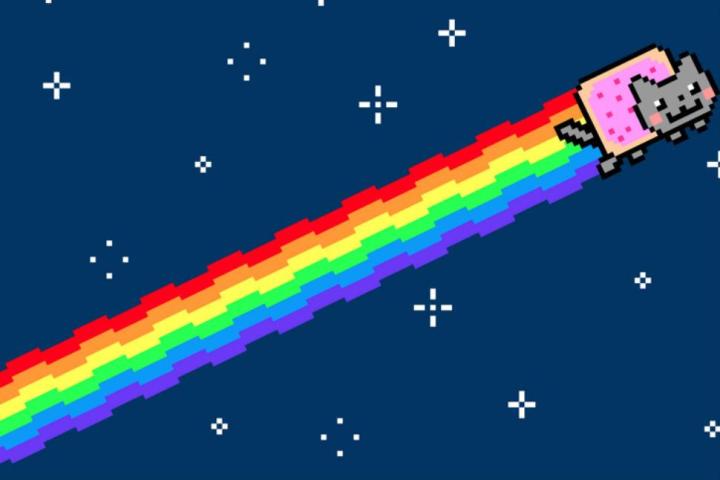
Memes are big business, and “going viral” is now a marketing strategy, not just a term doctors say with worried faces. And images are more likely to get shared than text, which is one of the reasons why Imgur, the photo hosting site started to spread images through Reddit, has now eclipsed Reddit’s traffic.
With the burgeoning importance of online image virality in mind, Italian researchers used Google+ to try to unlock the key to viral success online (they probably could’ve just asked Jonah Peretti, but whatever).
They looked at images shared by Google+ users with high follower counts, and looked at a few factors as viral influencers, comparing static images with animated ones, examining which photo orientation is most popular, and examining the importance of faces in viral success. The researchers discovered that GIFs and animated images are more likely to be shared than static images. They explained this by noting that GIFs are usually “funny, cute, or quirky.” Astute observation. They also found that portrait pictures are shared more frequently than squared, Instagram-style ones, and landscape photos are the least likely to achieve viral success. Photos containing one face are shared slightly more than others, and colorful images are shared more than those with subdued or black-and-white color schemes.
The researchers noted that resharing an image and commenting or endorsing an image are two very different phenomenon. When someone clicks +1, they’re giving an image their stamp of approval, but not necessarily using the image to represent themselves. When someone reshares an image, on the other hand, they’re doing just that. People tended to reshare positive images more frequently than negative ones, presumably because they want to portray themselves as a upbeat.
So, if you’re trying to get an image to go viral on Google+, choose a happy, colorful GIF with a portrait orientation.
But what about other networks?
This isn’t the first time researchers have tried to figure out why certain things go viral. Researchers at University of Alabama examined why videos go viral, and discovered the most important factor was emotional connection — if someone finds a video especially delightful or disgusting, they’re more likely to share it around. They dubbed this phenomenon “emotional contagion” and I’m pretty sure it explains why Upworthy exists. Although their study focused on videos, it is reasonable to assume the same would be true of images, and that emotional connection would play a role in image virality.
On Reddit, a user’s personal brand is important when it comes to virality (known users have more success than people using throwaway accounts) and the same images are shared by multiple users with varying degrees of success, depending on the caption, who is submitting it, and what type of day they post it (lunchtime is the best for peak viral potential).
Facebook employees looked into why certain photos go viral on the site, and found two distinct paths to viral status: First, if a high-profile user is the source, the photo is more likely to go viral (something that explains the popularity of whatever George Takei shares). But they also found a second, more organic path, where photo virality wasn’t attributed to the source’s popularity. The researchers didn’t delve into what made certain photos more shareable than others (and since Facebook doesn’t totally support GIFs, we know that GIFs have no edge there). Because Facebook’s News Feed is a big ole mess, shared images often get buried, which negatively impacts their chances of going viral.
No one has figured out a surefire method for going viral using images, but based on what we know, you’ll want a peppy, bright image with an emotional punch — preferably a GIF, depending on where you’re sharing. And, since cats rule everything around me when it comes to Internet fame, putting a feline in the frame certainly won’t hurt your cause.
Based on my calculations this would do VERY well on Google+ (if I, you know, actually used the service):

Just please, for me, don’t use the phrase “restore your faith in humanity” when you’re sharing an image.


